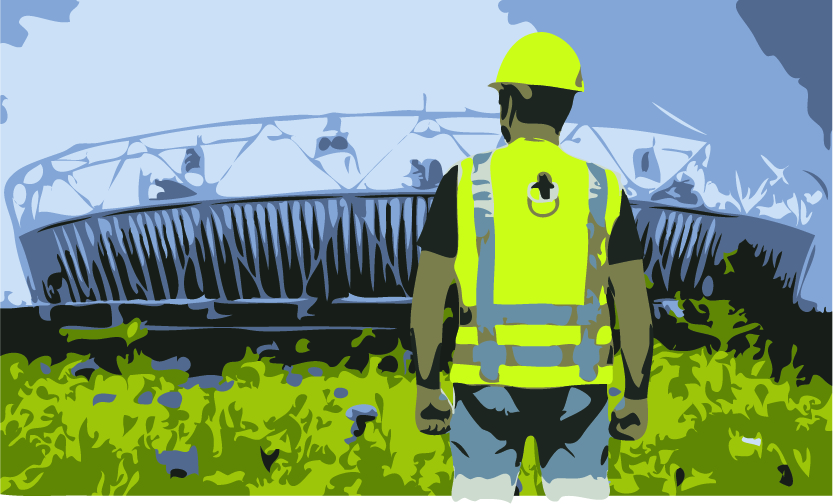Any review of 2012 has to include the London Olympics. Its construction safety record was second to none. For the first time in history, an Olympic Games was built and no-one died.
Now researchers are looking into what made the Olympic construction such a success. One aspect analysed by the UK Health and Safety Laboratory was the safety culture within the companies which built the Olympic Park.

Some have argued, the researchers say, that health and safety best practice is too complex to apply in the construction industry. But the Olympic experience provides evidence that it is possible, through engagement, worker involvement and organisational commitment, to develop a strong safety culture.
Construction of the main 2012 venues involved around 62 million hours of work with an accident frequency rate of 0.17 per 100,000 hours – less than half the construction industry average [according to RoSPA: http://www.rospa.com/news/releases/detail/default.aspx?id=1094 ]
By talking to people at all levels within the construction project, Health and Safety Laboratory researchers were able to assess safety culture. One aspect they identified as key was the behaviour of the people themselves. Part of the success of the Olympic project was in making safety a personal issue and the report gives several examples.
One company stopped work in response to a serious incident to allow people to reflect and to discuss how similar incidents could be avoided in future.
In another, a training programme focused on the impact that injuries at work have on people’s lives at home and with the family.
We’re proud to say that two Lattitude films were used by Olympic contractors to improve people’s understanding of the impact of an accident. Both Hindsight – The Official Ken Woodward Story and It Will Never Happen to Me featuring Jennifer Deeney were cited in the Health and Safety Laboratory’s report. They were used to highlight the potentially devastating effects unsafe behaviour can have on family and friends.
The Olympic Delivery Authority had a clear vision that it wanted safe and healthy behaviour embedded in people’s daily activities. Contractors were obliged to operate a behavioural safety programme, there was free access to a health service, and above all, project leaders were required themselves to consistently demonstrate the behaviour expected of their workers.
Excellent training and awareness underpinned all this, helping to make the safety culture at the Olympic Park world-class. The result was a gold-medal-worthy safety record.
The full report can be found here. It includes a useful matrix identifying how a positive safety culture was achieved, under eight headings:
Organisational commitment
Behaviour
Trust
Usability of procedures
Engagement
Peer group attitude
Resources
Accident and near-miss reporting
The London 2012 Learning Legacy website has a more detailed version of the Safety Culture report here as well as other useful health and safety information.
Lattitude Productions specialises in training films that inspire people to improve safety. More details on all our films can be found here.
Related articles:
Olympic research validates the Lattitude approach
Torchbearer Jen says safe Olympics workers deserve a medal
